
- by Ready2 Team
How much water should you actually drink at a festival?
- by Ready2 Team
So, was it one glass an hour? Or one glass of water for every alcoholic drink? How are you supposed to know how much you've sweated at a festival? Do you need to be attached to a water bottle all day just to get enough? We’re here to explain it all. Paying attention to your hydration isn't just important; on a festival day, it can literally be the difference between having the time of your life and taking a trip to the medical tent.
Let's start with the most important, immediately useful advice. If you only remember a few things, make it these.
The basics: Aim to drink about one glass (250 ml) of water or a soft drink per hour. This is a guideline, not a strict rule. Always listen to your body. Two glasses per hour is the absolute upper limit to avoid water intoxication.
Alcohol: Alcohol dehydrates you. For every glass of alcohol you drink, your body loses about 100 ml of extra fluid. Compensate for this by drinking one glass of water for every two alcoholic beverages.
Using substances: When using substances like MDMA (ecstasy) or amphetamines, your body's fluid balance becomes unpredictable. Be extra cautious. Stick strictly to a maximum of one glass of fluid per hour and focus on your body's signals.
The pee check: The color of your urine is your best friend. Is it dark yellow? You're getting dehydrated and should calmly drink some water or a soft drink. Is your urine completely clear, like water? You're drinking too much and should take a break. A light, hay-like yellow is the perfect color.
The pee-break check: Have you been dancing for four hours and still haven't needed to pee, without feeling any urge at all? This could be a signal. It might mean you're dehydrated, but if you've taken XTC, it could also mean your body is retaining too much fluid. See this as a moment to take a break and check in with yourself.
Salt is your friend: When you sweat, you don't just lose water; you also lose salts (electrolytes). Replenish them by eating something salty, like fries, chips, or a hot dog. This helps your body hold on to water more effectively. An ice cream is also a great way to cool down and get some fluids in.
Look out for your friends: Take care of each other. If someone seems confused, is complaining of a headache, or is drinking an excessive amount of water, talk to them. When in doubt, go to the first aid tent together.
Your body is a smart system that constantly regulates its water balance. Your total fluid intake doesn't just come from what you drink, like water, tea, or soda, but also in large part (about 20-30%) from the moisture in your food, plus a little bit of water released during your metabolism. You lose water through urine, stool, breathing, and sweat, with your kidneys playing the main role in regulating this balance. For a healthy adult, a total water intake of about 3.2-3.7 liters per day for men and 2.2-2.7 liters per day for women is recommended. This might sound like a lot, but remember this includes the fluid from food. In practice, this means most people should drink about 1.5 to 2 liters per day.
However, this is a guideline, not a strict rule. The popular idea that you must force yourself to drink eight glasses of water a day is not strongly supported by science for most healthy people. There is, however, convincing evidence that a higher water intake significantly reduces the risk of developing (or re-developing) kidney stones. For other claims, like better skin, preventing constipation, or 'flushing out' your system, the scientific evidence is limited or non-existent. For most people, it's enough to drink when you feel thirsty, unless you're exercising intensely, you're in a hot climate, or you have specific medical conditions. Another very reliable indicator is the color of your urine. A light, hay-yellow color usually indicates good hydration. If it's darker, it's time for a drink. For a normal day, drinking when you're thirsty and checking the color of your pee now and then is more than enough.
The moment you start exerting yourself, the rules change. During exercise, your body loses a lot of fluid and electrolytes (salts) through sweat to regulate your body temperature. Even a minor fluid loss of 2% of your body weight can already reduce your performance and put extra strain on your heart. Drinking properly is crucial for a safe and effective workout.
A good hydration plan starts before you even hit the gym. Make sure you start your workout well-hydrated by drinking enough in the hours leading up to it. During the exercise itself, try to compensate for fluid loss by drinking small amounts regularly, for instance, a few big sips every 15 to 20 minutes. A practical tip to know how much you're losing is to weigh yourself before and after an intense workout. For every kilogram of weight you've lost, you need to replenish about 1.5 liters of fluid.
For workouts lasting longer than an hour, you're not just losing water but also important salts. That's when a sports drink with electrolytes can be beneficial. These salts help your body retain fluids better and can help prevent muscle cramps. This principle is the perfect bridge to the most challenging situation for your fluid balance: a festival.
The golden rules exist for a reason. At a festival, you're constantly balancing between two dangers: dehydration and water intoxication. The treacherous part is that their initial symptoms, like headache, nausea, and confusion, are very similar.
Dehydration is the most well-known risk. On a hot day, when you're dancing for hours, your body can produce liters of sweat to cool down. Especially in high humidity, your sweat doesn't evaporate well, and you keep sweating without actually cooling down, leading to massive fluid and salt loss. Alcohol significantly speeds up this process. It inhibits a hormone (ADH) that tells your kidneys to retain water. This makes you urinate more than you drink, worsening your fluid deficit.
Water intoxication, or hyponatremia (hypo = too little, natremia = sodium in your blood), is the lesser-known but life-threatening opposite. It happens when you drink an excessive amount of water in a short period. Your kidneys can only process about 0.7 to 1 liter of water per hour. If you drink more, your blood literally becomes too diluted, and its sodium level plummets. In response, your body's cells, including your brain cells, absorb this excess water like a sponge and begin to swell. Because your brain is enclosed in your rigid skull, there's no room for this swelling. This causes a dangerous pressure build-up in your brain, which can lead to a coma and even death.
The risk of water intoxication is dramatically increased by MDMA (ecstasy). This is due to a dangerous combination of effects. First, MDMA raises your body temperature, making you sweat more and feel thirsty. Second, it stimulates the release of the same ADH hormone that alcohol inhibits. This means MDMA puts the 'brakes on' urination; your body holds on to fluid. Third, the substance gives you a dry mouth, which can trick you into thinking you're thirstier than you actually are. Finally, in the euphoria of the party, you're simply less focused on how much you're actually drinking. This combination can lead users to drink too much water while their body is unable to get rid of it. It should be noted, however, that severe water intoxication is very rare in the Netherlands due to good public information and the mandatory presence of first aid services.
Women face an additional risk here. Because a woman's body, on average, consists of a lower percentage of water, the sodium concentration in their blood drops more quickly with the same amount of water intake. One study at festivals even showed that 25% of female MDMA users had a mild form of water intoxication, compared to only 3% of male users.
The combination of alcohol and MDMA is extra risky. They don't cancel each other out; they create chaos in your body's fluid regulation. MDMA puts the brakes on urine production, while alcohol opens the floodgates. The result is unpredictable and puts a heavy strain on your body. In this battle, MDMA's effect usually 'wins out', and users urinate less, so you must be cautious.
Other substances also have an impact. Amphetamine (speed) raises your body temperature and heart rate, leading to heavy sweating and an increased risk of dehydration. Cocaine has a similar, though often less intense, effect on sweating, although it is very harmful for other reasons (like damage to your heart, kidneys, and nasal lining). Psychedelics like LSD or truffles generally do not have a significant impact on your fluid balance in practice.
Good preparation is half the battle. Make sure you start the festival day well-rested and already hydrated. Begin the day with a few glasses of water and a solid breakfast. This gives you a buffer for the day ahead. Bring an empty, reusable bottle; almost every festival has free water stations.
Take regular breaks throughout the day. Find a spot in the shade to give your body a chance to cool down. And remember: if you're not feeling well, or you feel dizzy, confused, or get a sudden, throbbing headache, stop what you're doing, find a quiet place, and ask for help. The people at the first aid tent are there to help you, without judgment. Your health is the most important thing.
We at Ready² stand for sustainable partying. Partying is part of life, and for many, it's inextricably linked with alcohol and drug use. It would be great if that weren't the case, but reality is different. We want to help people navigate this safely by providing information and being a platform where people can ask questions. That's why we developed our dietary supplement with scientifically proven ingredients that can give you that extra push to maintain your healthy lifestyle, so you don't start your week completely exhausted.
Last but not least, it is very important to educate yourself on the the risks with festivals and learn ways to take care of yourself in a durable way:
Resources:
Hoeveel water moeten we eigenlijk drinken? | NTVG
Outcomes in Randomized Clinical Trials Testing Changes in Daily Water Intake: A Systematic Review
Dehydration and rehydration in competitive sport - PubMed
American College of Sports Medicine position stand. Exercise and fluid replacement - PubMed
Water and electrolyte requirements for exercise - PubMed
Hydration Status: Influence of Exercise and Diet Quality - PMC
Trimbos Factsheet watervergiftiging
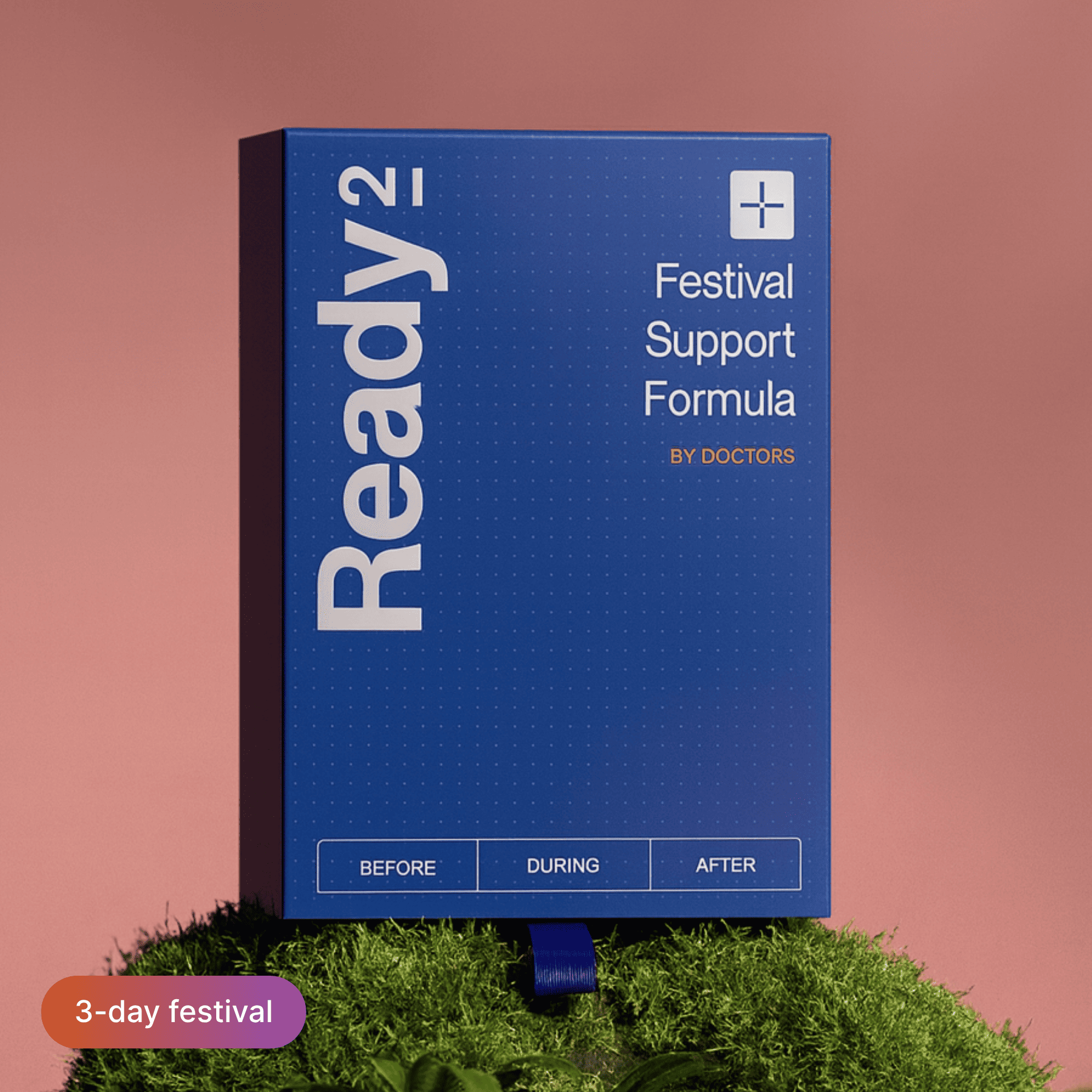
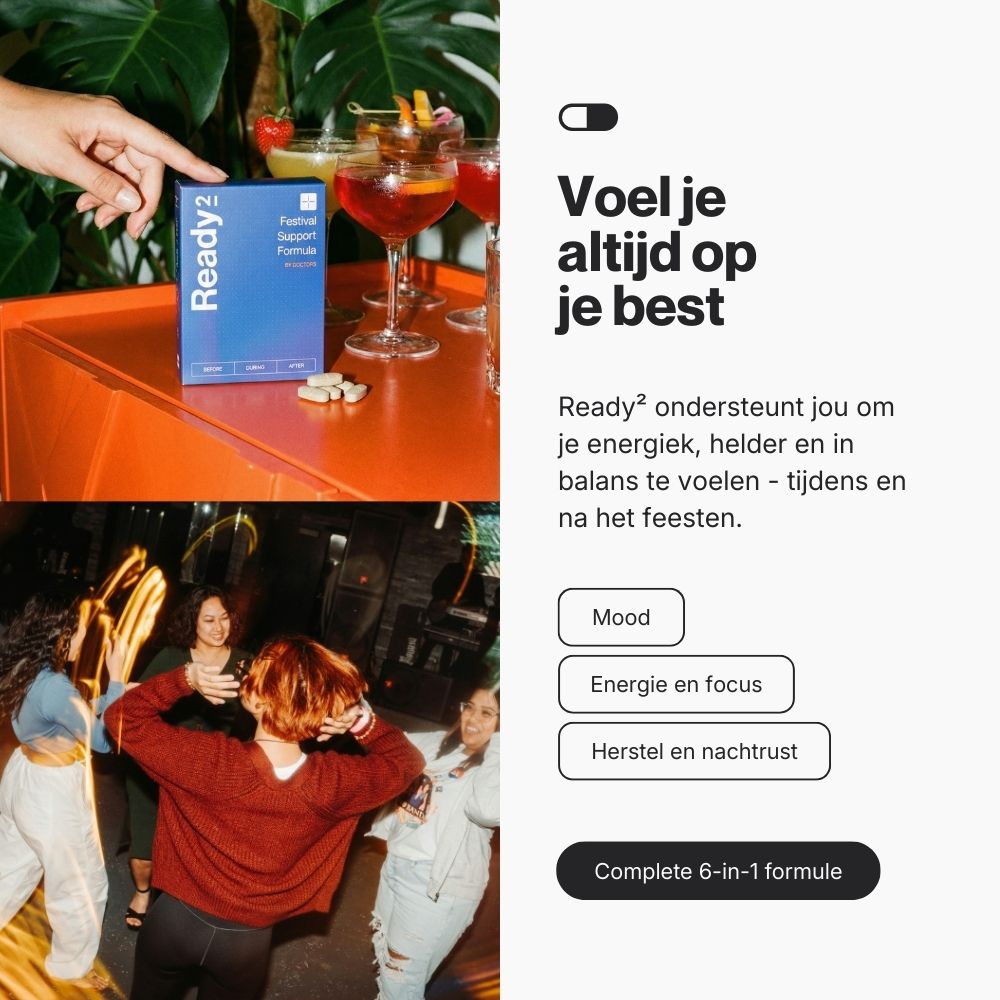
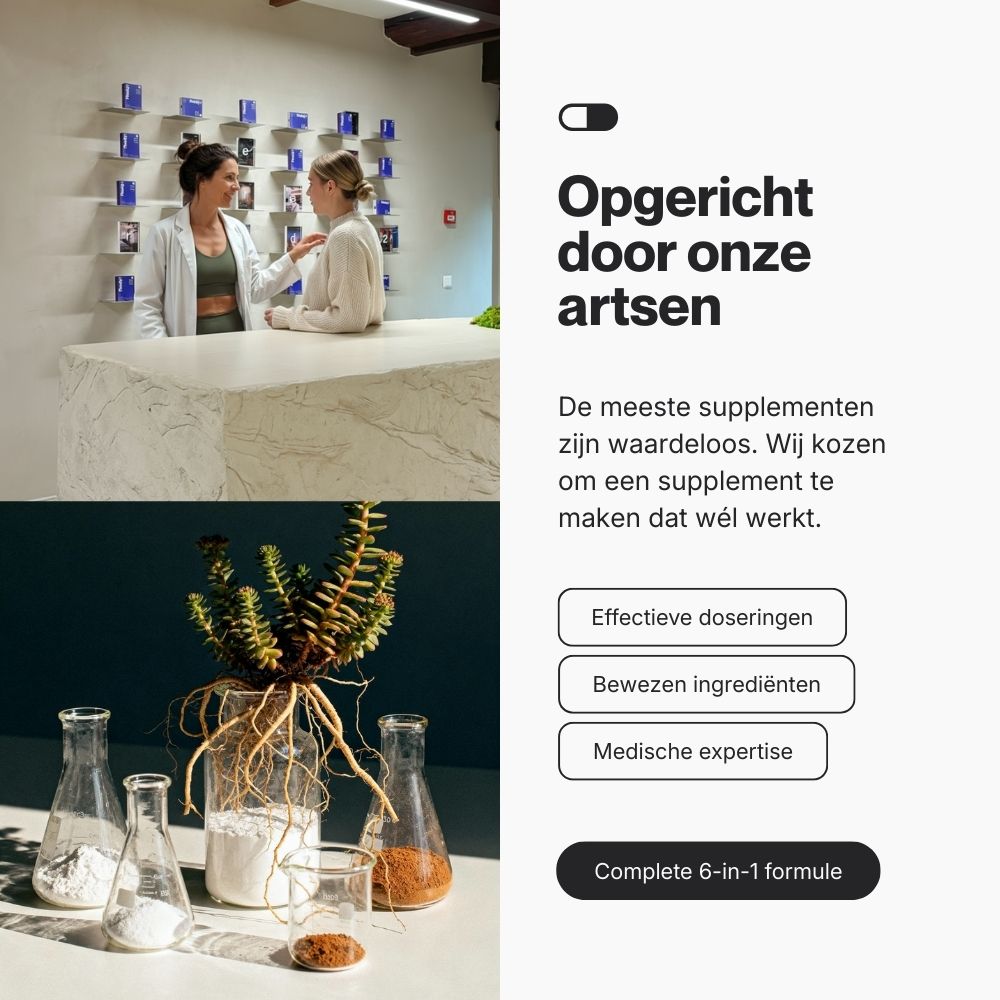

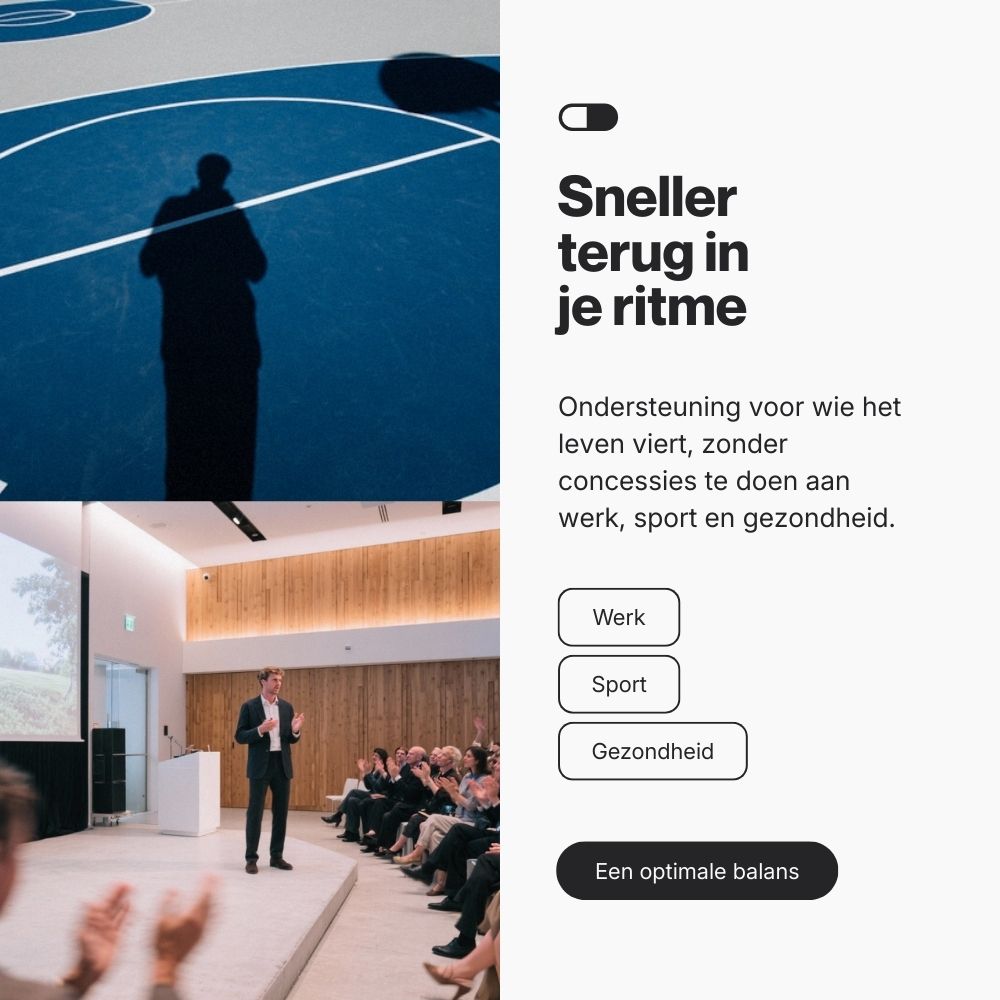
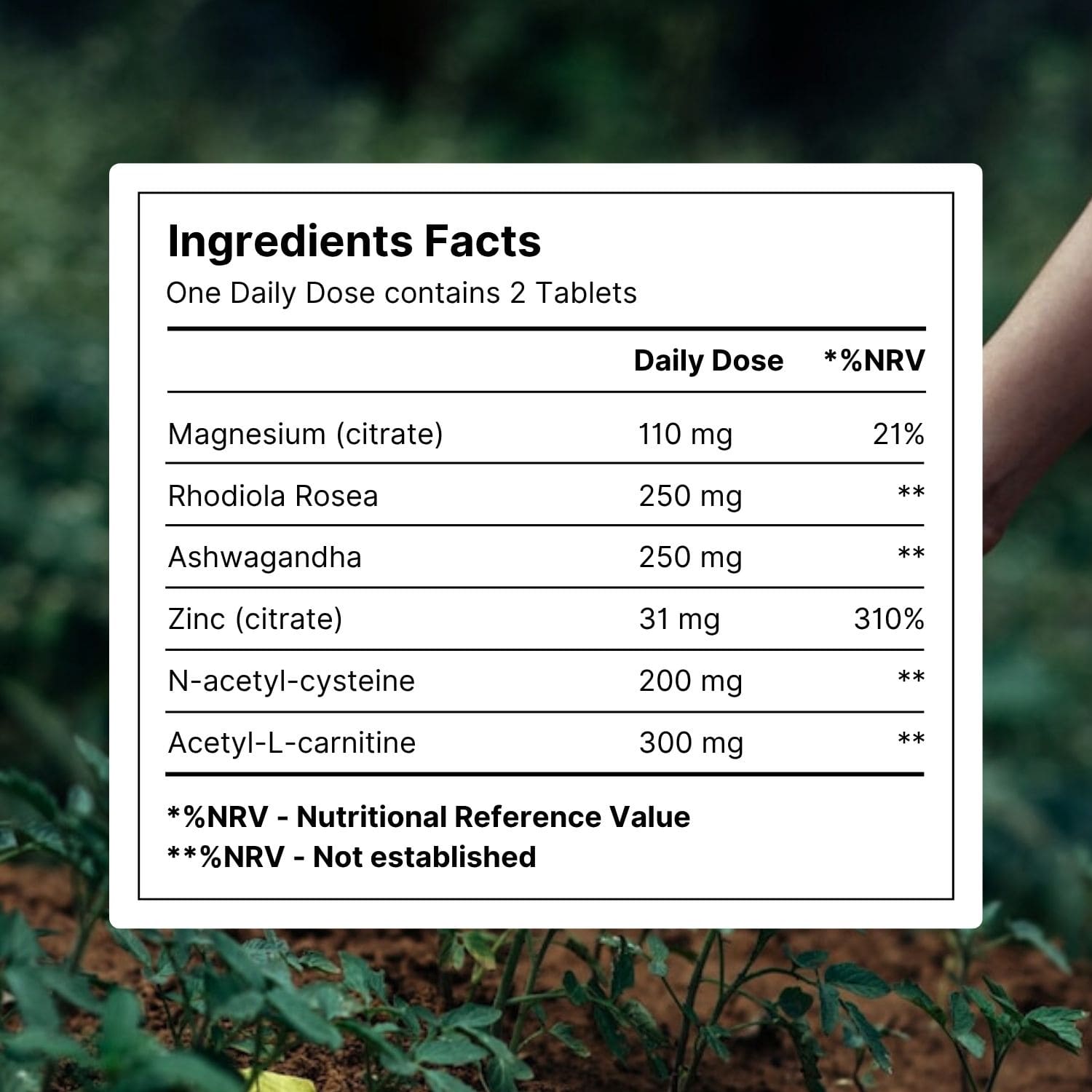
Our medical team designed Ready² to support your body and mind during and after intense days or festivals. So you will feel like yourself much quicker and skip those horrible mondays.
This product contains 10 tablets for 5 doses.
Share:
What is the Amsterdam Dance Event?